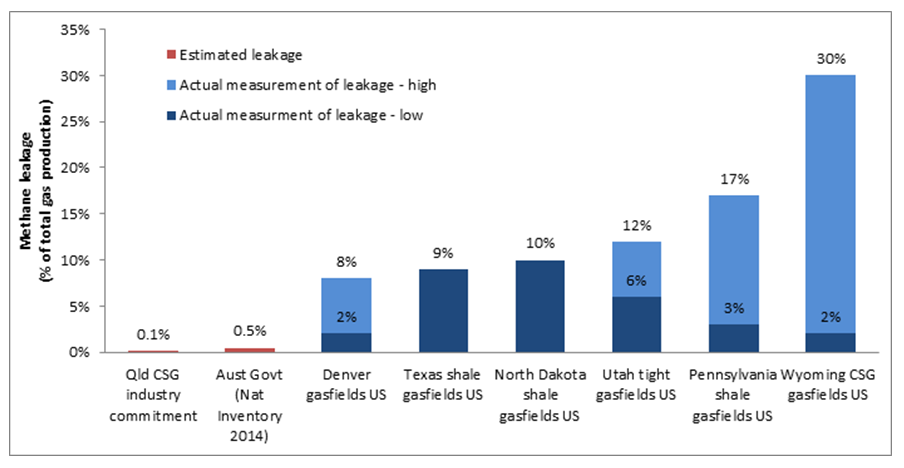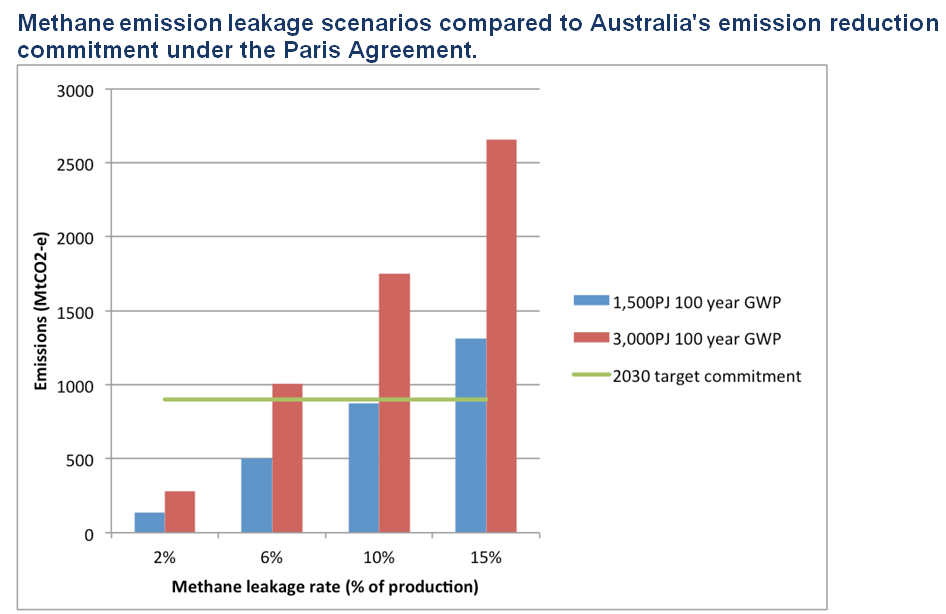Australia’s unaccounted for emissions could cause Paris target failure
A new report by the University of Melbourne Energy Institute has found that unmeasured methane leakage and fugitive emissions from unconventional gasfields could cause Australia to fail its Paris climate commitments.
The report, commissioned by The Australia Institute, found that:
- Several major potential sources of methane emissions are assumed to be zero under Australia’s accounting and reporting of unconventional gas.
- Methane measurements at US unconventional gas fields have found leakage rates in the order of 10-25 times higher than the Australian government reports to the UNFCCC, and up to 170 times those claimed by the gas industry.
- If leakage rates comparable to those found in the US are found at Australian unconventional gas fields it will have serious implications for Australia meeting its emission reduction commitments under the Paris Agreement.

“Methane is a very powerful greenhouse gas, which means that controlling methane emissions is crucial to meeting climate targets and avoiding tipping points,” Report author and former AEMO Gas Principal, Tim Forcey said.
“While the industry in Australia has claimed that fugitive emissions amount to only 0.1% of gas production, actual measurements made at US gas fields found leakage rates to be up to 17% of production, or 170 times the Australian assumption.
“Looking specifically at methane emission rates from unconventional gasfields, measurements in the US are up to 10-25 times higher than rates reported by the Australian Government to the UNFCCC.
“This report identifies significant weaknesses in the way that Australia measures methane emissions and identifies major sources of emissions during the ‘production’ phase of unconventional gas that are effectively set to zero in Australian reporting,” Forcey said.
Principal Advisor at The Australia Institute, Mark Ogge says this research reveals that if methane leakage from Australian gas fields matched US measurements, then at current production levels Australia would in reality be emitting an extra 92Mt of dioxide equivalent per annum.
“We’re potentially not measuring the equivalent of the emissions from our entire transport sector,” Ogge said.
“Australian gas fields may well have higher levels of leakage than US gas fields as the gas is far closer to the surface, and depressurising of coal seams over vast areas increases the risk of migratory emissions.
“Currently measurements are taken just on the well, ignoring surrounding infrastructure through the refinement process.
“Methane leaks of 92Mt per annum would also double the amount of emissions reductions we have committed to under the Paris Agreement.
“If the 20 year global warming potential of methane is considered, this would equate to emissions of 232 Mt carbon dioxide equivalent per annum over the 20 year period, equivalent to Australia’s entire electricity emissions.
“Australia must set about accurately and independently measuring and reporting these fugitive emissions, or we risk breaching our international climate commitments,” Ogge said.

Figure: Methane emission leakage scenarios compared to Australia’s emission reduction commitment under the Paris Agreement.
Related documents
Related research
General Enquiries
Emily Bird Office Manager
Media Enquiries
Glenn Connley Senior Media Advisor